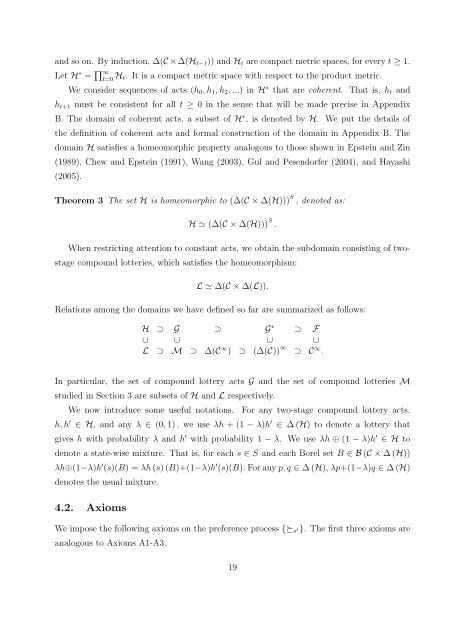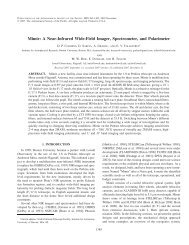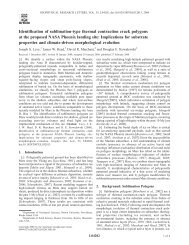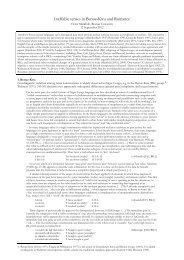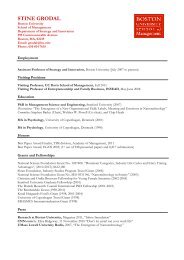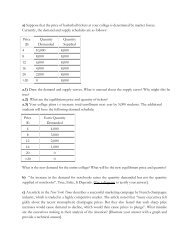Intertemporal Substitution and Recursive Smooth Ambiguity ...
Intertemporal Substitution and Recursive Smooth Ambiguity ...
Intertemporal Substitution and Recursive Smooth Ambiguity ...
You also want an ePaper? Increase the reach of your titles
YUMPU automatically turns print PDFs into web optimized ePapers that Google loves.
<strong>and</strong> so on. By induction, ∆(C ×∆(H t−1 )) <strong>and</strong> H t are compact metric spaces, for every t ≥ 1.Let H ∗ = ∏ ∞t=0 H t. It is a compact metric space with respect to the product metric.We consider sequences of acts (h 0 , h 1 , h 2 , ...) in H ∗ that are coherent. That is, h t <strong>and</strong>h t+1 must be consistent for all t ≥ 0 in the sense that will be made precise in AppendixB. The domain of coherent acts, a subset of H ∗ , is denoted by H. We put the details ofthe definition of coherent acts <strong>and</strong> formal construction of the domain in Appendix B. Thedomain H satisfies a homeomorphic property analogous to those shown in Epstein <strong>and</strong> Zin(1989), Chew <strong>and</strong> Epstein (1991), Wang (2003), Gul <strong>and</strong> Pesendorfer (2004), <strong>and</strong> Hayashi(2005).Theorem 3 The set H is homeomorphic to (∆(C × ∆(H))) S , denoted as:H ≃ (∆(C × ∆(H))) S .When restricting attention to constant acts, we obtain the subdomain consisting of twostagecompound lotteries, which satisfies the homeomorphism:L ≃ ∆(C × ∆(L)).Relations among the domains we have defined so far are summarized as follows:H ⊃ G ⊃ G ∗ ⊃ F∪ ∪ ∪ ∪L ⊃ M ⊃ ∆(C ∞ ) ⊃ (∆(C)) ∞ ⊃ C ∞ .In particular, the set of compound lottery acts G <strong>and</strong> the set of compound lotteries Mstudied in Section 3 are subsets of H <strong>and</strong> L respectively.We now introduce some useful notations. For any two-stage compound lottery acts,h, h ′ ∈ H, <strong>and</strong> any λ ∈ (0, 1) , we use λh + (1 − λ)h ′ ∈ ∆ (H) to denote a lottery thatgives h with probability λ <strong>and</strong> h ′ with probability 1 − λ. We use λh ⊕ (1 − λ)h ′ ∈ H todenote a state-wise mixture. That is, for each s ∈ S <strong>and</strong> each Borel set B ∈ B (C × ∆ (H))λh⊕(1−λ)h ′ (s)(B) = λh (s) (B)+(1−λ)h ′ (s)(B). For any p, q ∈ ∆ (H), λp+(1−λ)q ∈ ∆ (H)denotes the usual mixture.4.2. AxiomsWe impose the following axioms on the preference process {≽ s t}. The first three axioms areanalogous to Axioms A1-A3.19


